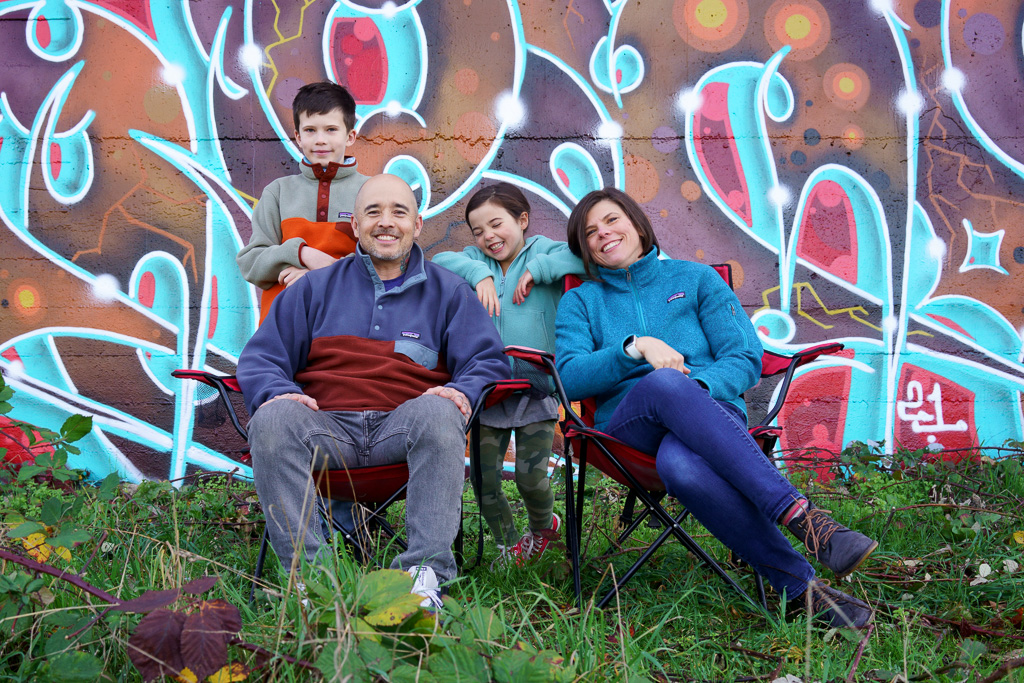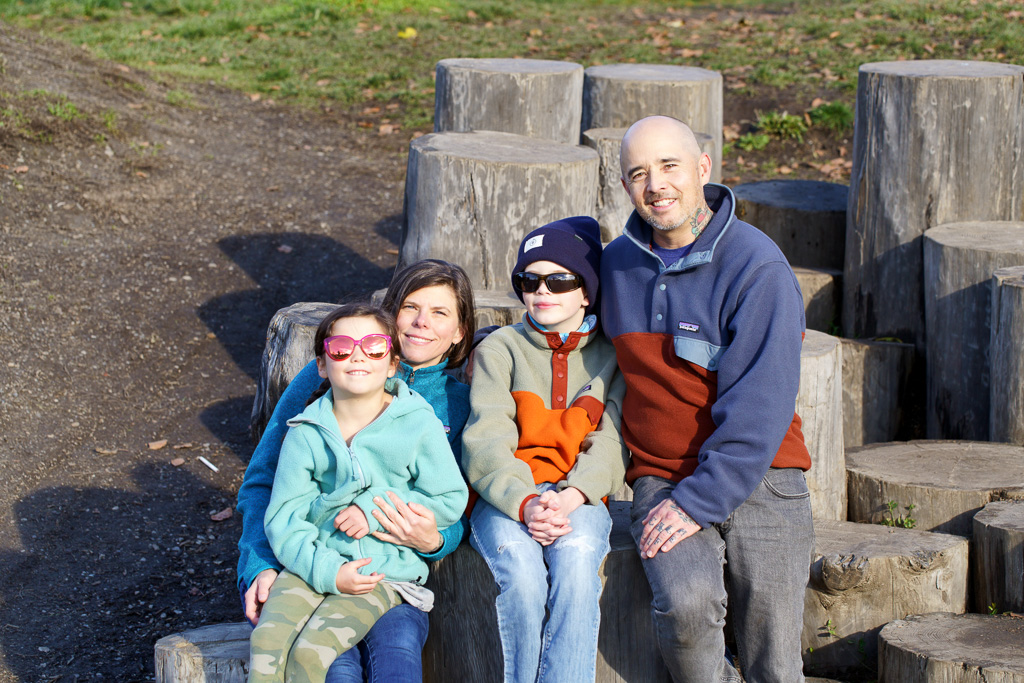
While we were out in Victoria B.C. visiting my wife’s brother and his family, my sister-in-law wondered if maybe I could shoot some family photos. I had minimal kit with me, so I had to think for a bit about what I could do to compensate for technical limitations (like no flash). I suggested we go casual. The big graffiti murals on the E & N Rail Trail would offer a huge selection of possible backdrops. Let’s grab a couple lawn chairs and go for a hike.
The walls on the Rail Trail face north, so they throw everything in shade, perfect for eliminating shadows on a sunny day. Yes, despite flooding in B.C., it was a sunny day. We found a mural with colours that worked, crawled through a hole in the fence, and set up the chairs.
It used to be that family portraits were a formal affair. Years ago, when it could take minutes to expose a glass plate (or whatever the photographer was using to capture the image), the subjects had to stand stock still. And because it’s difficult to hold a smile for minutes, most subjects resorted to an impassive expression. Sometimes, they looked ill-tempered or even evil. What started as a technical necessity morphed into a social convention. Even as film speeds improved and subjects no longer had to keep still for minutes, the process was cast in the pall of formality. People felt obliged to be stiff and humourless for family portraits. I remember as a child being scolded for ruining a shot because I laughed. Now, I look back on those photos—the outtakes—and they’re the only ones worth keeping, the only ones that really capture a sense of personality and family dynamics.
In this case, the portrait looks more natural. But don’t be deceived. There’s still plenty of artifice at play here. For example, when my sister-in-law folded her legs and leaned in, I moved my nephew from the centre to the side to create a long diagonal line from the top of his head to the tip of his mother’s toes.
After we finished there, we moved to a playground at the local elementary school where I could position everyone on upright logs. Here, I didn’t have the benefit of shade, but the results were better than I expected. This time, the diagonal line moved in the opposite direction.
